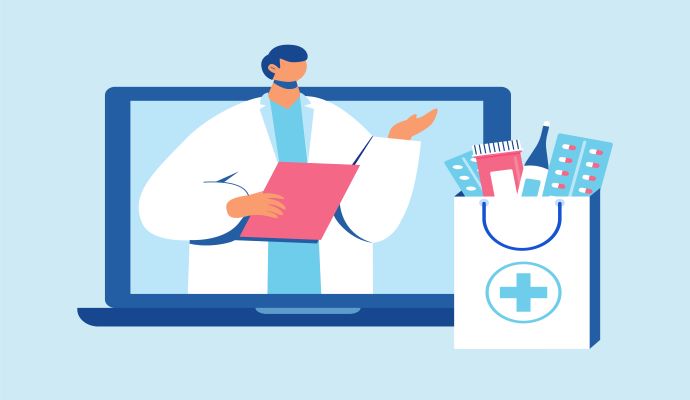UPMC telehealth clinic facilitates OUD medication access, cuts costs
New research reveals that telehealth bridge clinic visits resulted in broad buprenorphine initiation and significant cost savings for the health system.

Source: Getty Images
- UPMC released new data showing its telehealth bridge clinic for opioid use disorder (OUD) patients supported both the initiation of buprenorphine and reduced unplanned and total care costs.
The Pennsylvania-based health system established the clinic after the US Drug Enforcement Administration (DEA) temporarily suspended restrictions on telehealth-enabled buprenorphine treatment. During the COVID-19 public health emergency (PHE), the DEA waived the Ryan Haight Act requirement that mandated healthcare providers conduct an initial in-person evaluation before prescribing controlled substances, including buprenorphine, through telehealth.
The UPMC Medical Toxicology Telemedicine Bridge Clinic coordinates OUD care with local treatment providers, including emergency medicine, toxicology, and addiction medicine physicians, as well as other stakeholders in the state. The physicians use audio-visual technology or the telephone to conduct remote evaluations, providing eligible patients with prescriptions for OUD medications.
For the new study published late last month in the journal Drug and Alcohol Dependence Reports, researchers analyzed claims of UPMC Health Plan members with OUD who were evaluated through the telehealth bridge clinic between April 2020 and October 2021.
Of 173 members evaluated at the bridge clinic during the above period, 150 met the study’s inclusion criteria. Most patients had Medicaid coverage (78 percent) and had a co-occurring diagnosis of a serious persistent mental illness (61 percent).
The study shows that a telehealth bridge clinic visit was associated with 91 percent of patients filling one or more buprenorphine prescriptions within 30 days. The mean and median proportion of days covered by buprenorphine were higher at all assessment time points after bridge clinic evaluations, rising from a median of 0 and mean of 20.7 percent of days with buprenorphine in the month before the evaluation to a median of 73.3 percent and mean of 65.1 percent in the month after.
Though higher medical and total costs per member per month were observed in the first month after the bridge clinic visit, unplanned care costs dropped by 18 percent.
However, following that initial increase, overall costs declined during the next six months. A bridge clinic visit was associated with a 62 percent reduction in unplanned care costs, a 38 percent reduction in medical costs, and a 10 percent reduction in total cost per member per month.
Bridge clinic use was also linked to significant declines in medical/surgical hospitalization, behavioral health hospitalization, and emergency department (ED) visit costs for substance use disorder-related diagnoses.
“Expansion of the Telemedicine Bridge Clinic model in coordination with existing community resources including OUD Centers of Excellence, EDs, urgent cares, and Federally Qualified Health Centers (FQHCs) offers a sustainable way to rapidly deliver care for complex, time-sensitive conditions including substance use disorders, associated medical illness such as HIV and viral hepatitis, and co-occurring mental health conditions,” the researchers stated.
They further noted that partnering with payers to conduct cost analyses will be critical for developing payment approaches that support the ability to scale medication-based OUD treatment to underserved areas.
The new research bolsters a previous study that highlighted the positive effects of the UPMC telehealth bridge clinic.
Published by UPMC in the Journal of Addiction Medicine, the study revealed that the clinic supported patient engagement and access among the high-risk OUD patient population.
Researchers found that of the 208 substance use disorder patients who scheduled appointments at the clinic from April 27, 2020, to July 31, 2021, 96 percent attended their appointments.
Nearly all (96 percent) of the 192 patients with OUD who participated in a telehealth appointment filled a buprenorphine prescription within 30 days. In addition, 77 percent filled two or more prescriptions after that.
